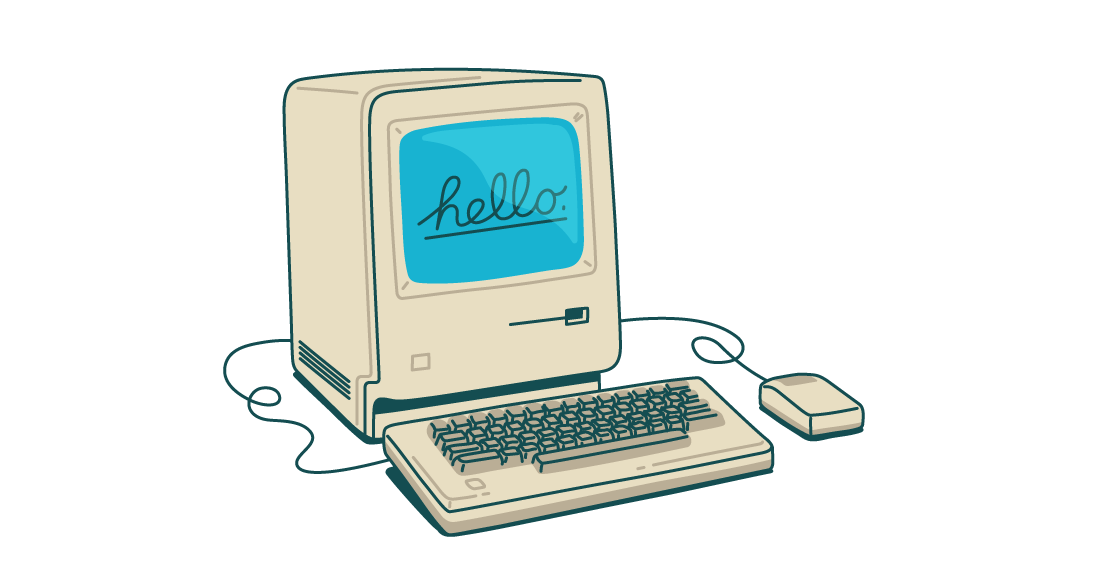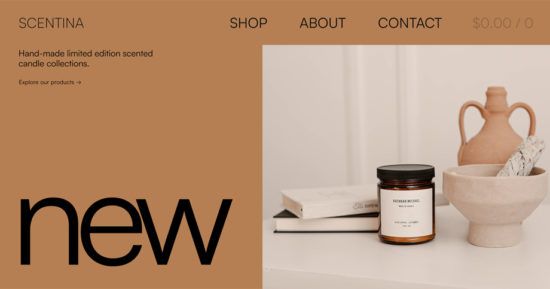As a UX/UI designer, graphic designer, photographer, or artist you have a particular sense of aesthetics and a style that makes all your creations recognizable. But, no matter if you create a state-of-art pieces or avant-garde, black-on-black designs, to get the job of your dreams, you need to present all your work correctly. You need to make an online portfolio that will make recruiters’ and hiring managers’ jaws drop to the floor.
o, to get a bit closer to getting those job interviews, the first step you need to take is joining a couple of design communities like Behance and Dribbble, and building your LinkedIn profile.
The second step you should take is creating a portfolio website that will show your talents, skills, capabilities and working experience. By creating this type of online portfolio, you’ll reveal more about who YOU are, not just what you do and why hiring you is the best investment your potential clients can make.
But, as it usually goes, there’s a problem.
Since there are so many designers and artists that are trying to do the same thing you are, you need to distinguish yourself among your peers.
How are you going to do so?
Well, providing an intriguing, never-before-seen online portfolio is an excellent place to start. But, you need to let recruiters take a look into your world and get to know you if you want to make a splash.
What should you say about yourself? Should you mention your background? Should you explain the methods and techniques you used to create your pieces? There are so many questions that need to be answered.
So, to help you create an impressive online portfolio that will make sure you stick out, we created these eight tips.
Let’s go through them together.
Tip 1: Keep the website design simple
We bet you expected to read this tip.
If you have seen our WordPress themes, then you know that Themes Kingdom knights are fans of minimalistic website designs. We have a good reason for that.
The way we see it, when you are creating an online portfolio, the most important thing you should focus on is the content (projects, stories behind those projects, project covers, etc.), because the content is the one that tells a story. If you add dozens of projects to a distracting, overpowering design, your portfolio visitors won’t know what to pay attention to.
Remember: your website design should serve as a base for all your work. It shouldn’t make your website clogged.
A tip to remember: Don’t go crazy with the font either. One font, across the whole website, is just what you need.
Tip 2: Make sure your homepage wows
The homepage is the first page recruiters see when they get to your website. This is the reason why it needs to be designed to attract attention.
Did you know that, when visiting a homepage, users spend less than 6 seconds (5,94 seconds, to be precise) looking at a homepage image? This number goes to show that you must give your online portfolio visitors a reason to stay longer than 6 seconds on your homepage. You need to spark their interest.
To help you create a stunning homepage, we would recommend you include an edge-to-edge slider to your homepage that will show up to, let’s say, four of your best, edgiest designs. By doing so, you are going to provide just a hint of what your website visitors can expect, grabbing their attention and making them check the Projects and About pages.
Tip 3: Be careful with the Projects page
No matter if you are a graphic or web designer, a photographer or a creative studio owner, you have probably done some exquisite work for a variety of clients. In that sea of your work samples, you need to choose the ones that will present you in the right light.
When choosing the projects you want to include to your Projects page, remember one, main rule: add the projects for which you believe potential clients and recruiters will find intriguing and of value.
Here are some tips that can help you choose the right pieces for your online portfolio:
- Never include just one large project in your online portfolio. Including several different projects will give your website visitors insight into your skills, abilities, and techniques.
- All featured projects must be up-to-date. No recruiter wants to see a project you completed ten years ago. Instead, choose the ones you recently created, for which you’ve used the latest techniques, quality materials, etc.
- Create compelling project descriptions. Hook you potential clients by writing a catchy headline that doesn’t reveal too much about the project. In the project description, you can provide a short but thorough explanation of the project.
- Choose wisely the covers for your project pages. Remember that the cover of your project doesn’t necessarily have to be a picture of that particular project. You can customize and play with them. You can even create similar covers for all your projects.
- Separate your projects into categories. This step is especially important because it will make sure that different types of clients can quickly find the projects that are relevant to them.
Tip 4: Invest time into writing a bio for an About page
If you are a multidisciplinary artist with over ten or fifteen years of experience, it can get hard to sum your whole work into a couple of sentences.
Here are some tips that will help you write a heart-warming and professional About page content:
- Your About page shouldn’t be just a list of past jobs you’ve done or clients you have worked with. The About page should contain a captivating story that includes your perspective on the projects you have completed.
- Don’t forget to share your background. When did you decide to become a designer/photographer/artist? What led you to pursue your career? Openly share events that made you into an artist you are today.
- Provide a lot of details. Without sounding too presumptuous, mention the names of the clients you have partnered with, and awards you won.
- Reveal something unique about yourself. Your About page shouldn’t be filled with just professional success. You need to show that you are a Superman in business, but that you are, after all, just an approachable human being IRL.
- If the copy is too simple, the design should be groundbreaking. If you decide to write a simple, five-sentence copy about yourself, be sure to wow the recruiters with some impressive About page design. You can add an unexpected hover effect or something similar. (If you need inspiration, check out the hover effect we added to the Info page in our Bottega theme demo).
Tip 5: Don’t list your skills and achievements; it’s boring to read
Yes, you have read that tip right. Listing all your skills is so 2012 and, not to mention, quite dull to read.
Don’t believe us? Go to awwwards.com/webistes/portofolio and check the top 5 sites. Out of those five sites, only one designer has listed skills.
True artists let their online portfolio design and content speak for themselves.
Tip 6: Don’t forget to include links
It goes without saying that, as an artist, you need to make sure that you are present online and that you are building your (online) brand. This is the reason why we advised you to join designer communities and start building your LinkedIn profile in the first place.
Your online brand needs to go hand in hand with your portfolio website. Since you have already joined several communities and, hopefully, made an impression, it’s time to connect all your accounts with your website. So, don’t forget to include links to your social media and other accounts as icons in the footer on somewhere in the header.
A tip to remember: You can also include your résumé in your online portfolio.
Tip 7: Make yourself easily reachable
Your potential clients are busy people, and so are you, which can make the process of arranging a meeting a bit difficult.
Ask yourself one question: why should you wait for recruiters to send you an email so you can go back and forth trying to find a date that works for both sides when you can use a tool which can shorten this whole process?
Here’s an idea: why don’t you add a calendar to your Contact page so recruiters can see when you are available for a meeting and open for a new gig? If you decide to include a schedule to your website, our advice is to check out the plugins like Booking Calendar or WP Simple Booking Calendar. Both of these tools provide a quick and reliable booking system for your website. If we had to pick one, it would be the Booking Calendar, as it doesn’t require third party accounts since all the bookings are stored in the database and is pretty quick to install and integrate.
Disclaimer: Themes Kingdom team is not affiliated with any of the mentioned plugins nor do we earn a commission if you end up purchasing any of the tools through referral links in this blog post. We merely wanted to name some services that can help you arrange a meeting with potential clients quicker.
Tip 8: Add a Blog
Although a blog section is not commonly seen on a portfolio website, we would highly recommend you create one.
Why is a blog such an essential section of your online portfolio? Because it can add value to the portfolio allowing you to present to your blog readers where you are professionally and what your aspirations are.
But, to be able to post content that adds value, you need to have a plan. Our advice is to include posts in which show new methods you’ve learned in the past few months, conferences you have attended, awards you’ve won, interviews you have given, etc.
When it comes to blogging, the most important thing is that you regularly create posts and therefore, keep your blog visitors up-to-date. No matter if you create one post every three months or a post every week, the essential thing is to have an editorial plan. Writing 20 posts in the beginning and not publishing for another 2 years is just not going to cut it.
Just make sure your blog doesn’t become a place where you share too much of your personal life because the blog will lose its purpose.
Are you ready to make your online portfolio pop?
That is, are you ready to make an astonishing online portfolio that will make your potential clients want to hire you?
If you are, it’s time to get to work.
Keep in mind all the tips we have mentioned in this post, and we are sure you are going to have more job interviews than you ever imagined.
Good luck! 🙂




5 thoughts on “ 8 tips for making an impressive online portfolio ”